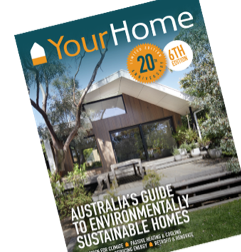Search
-
Family home built on existing foundations using passive solar principles, local materials and high-density insulation.
-
Two new apartments that use passive solar design principles, solar and water technologies, and smart home systems on a small suburban infill block.
-
Renovation using double glazing and effective gap sealing.
-
New build using some structure of the old house and reverse block brick veneer and a Trombe wall
-
New house using passive solar design, including a combination of heavy and lightweight materials, to overcome the constraints of a narrow block where the longest side faces west.
-
Energy plays a major role in Australian households, which use a variety of energy sources for heating, cooling, cooking, entertainment and transport. In 2018–19, households consumed 10.5% of Australia’s total energy (Australian Energy Update, 2020).
-
Renovation using double glazed windows and solar photovoltaic (PV) technology.
-
Winner of the Housing Industry Association’s National GreenSmart Energy Efficiency Award 2022, Torbul Hill house is a beautifully designed off-grid and self-sufficient home in Southern Tasmania.
-
New home designed for future recyclability with passive design principles.
-
New family home on a narrow block using passive solar design principles.
-
New build using reverse brick veneer and structural insulated panels
-
New build using the 3-bedroom Design For Place Banksia home plan, with additions of onsite renewable energy production, rainwater collection and waste management.
-
An inner Sydney house built on a small and difficult site, uses solar passive design and ‘Passive House’ principles to achieve a comfortable and compact home. The homeowners bought the parcel of land with pre-approved house designs, so there was little scope for changing the design of the home.
-
Key points
- The best heating and cooling system is one that suits your climate, the size of your home, and your lifestyle.
- Having the right sized system for your home will save you energy and money. Buying a system that is too large or small will mean you will use energy unnecessarily and pay more in the long run.
-
Two new townhouses and two new apartments using reverse brick veneer and straw bales.
-
Key points
- A home is built to last for many years and provides its occupants with a refuge from the climate. Designing for potential impacts from a changing climate is important.
- If climate change is considered when a home is being designed or renovated, it is likely to remain comfortable and efficient for longer, and may be more cost-effective.
-
Key points
- Glazing – the glass and frames in windows, external doors and skylights – has a significant effect on thermal performance. Up to 40% of a home’s heating energy can be lost and up to 87% of its heat gained through windows.


